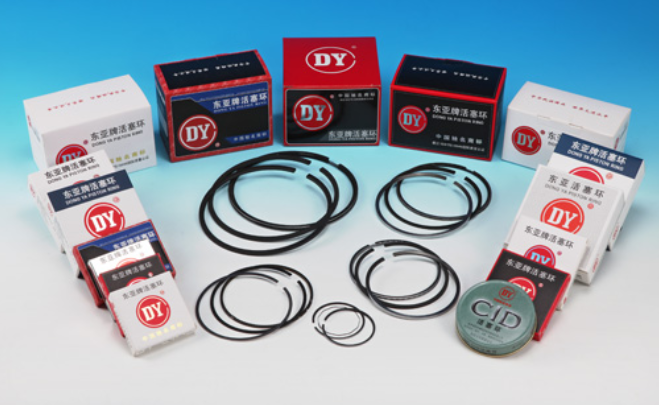Piston Ring Set Composition Recommendations
When faced with the choice between piston ring sets with moly, chrome, or cast iron-faced top compression rings, mechanics may often turn to the jobber salesman and ask, "What should I use?"
There is often confusion in the trade regarding the most suitable type of ring set to use. Dongya aims to provide some suggestions to assist consumers in making the right decision for their specific application.
The most crucial factor in selecting the appropriate top compression ring face coating material is to consider the service requirements under which the engine will operate. Will the engine experience high speeds or loads, frequent stop-and-go driving, or operate in dusty or dirty environments? For instance, if the vehicle is a family-operated passenger car driven under typical conditions by average drivers, the choice of ring face coating type may not significantly impact the engine and piston ring lifespan. However, if the engine will regularly face any of the aforementioned conditions, then undoubtedly, one type of ring face coating will be more suitable than the others.

The three commonly used types of top compression ring face coatings—chrome, moly, and cast iron—each offer their own advantages depending on operating conditions. Moly exhibits exceptional resistance to scuffing, while chrome also resists scuffing well but lacks moly's ability to retain oil. Plain cast iron piston ring is a durable wear surface in normal operating conditions and is less costly than the moly or chrome faced ring.
For typical light-duty service where the vehicle is not exposed to prolonged periods of high speed or heavy loads and is primarily driven on paved streets, plain cast iron is a suitable choice. Cast iron piston rings are highly durable under normal conditions, provided there are no extreme heat or dirt conditions.
In contrast, when faced with continuous high speeds or severe load conditions that subject the engine to prolonged periods of high temperatures, moly becomes a preferable choice due to its resistance to scuffing. Moly, short for molybdenum, is naturally porous in its applied state, allowing it to retain oil effectively on the ring's face. Additionally, moly has the highest melting point among the three popular face coatings, enabling it to withstand more severe operating conditions and resist scuffing and scoring more effectively.
In dusty environments like gravel pits, sand or rock mines, or when operating on dirt or unpaved roads, chrome is the preferred choice for top compression ring face coatings. Overall, under normal driving conditions and with proper maintenance such as regular oil and air filter changes, all three coatings perform equally well. It is the installer's expertise and analysis of the engine's primary use that should guide them in selecting the most suitable ring set for the customer's engine.contaminants, chrome's smoother O.D. surface makes it a logical choice. Chrome's high density and hardness resist the impingement of dirt onto the ring face, which helps prevent cylinder wear and allows exhaust gases to carry airborne contaminants out through the exhaust system. While chrome offers more resistance to scuffing and scoring than cast iron, it has slightly less resistance than moly.
Overall, under normal driving conditions and with proper maintenance such as regular oil and air filter changes, all three coatings perform equally well. It is the installer's expertise and analysis of the engine's primary use that should guide them in selecting the most suitable ring set for the customer's engine.

